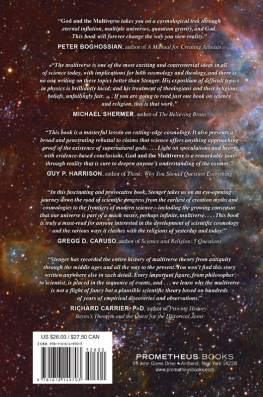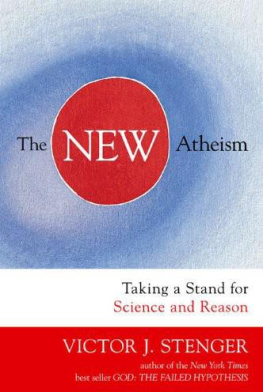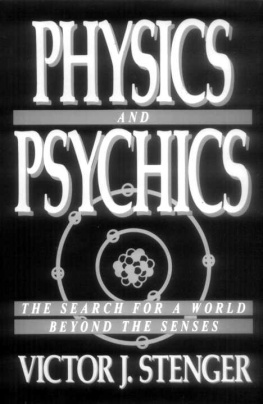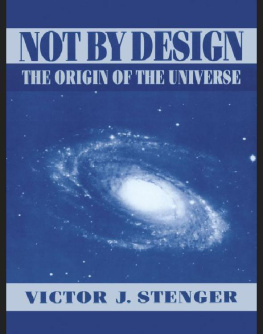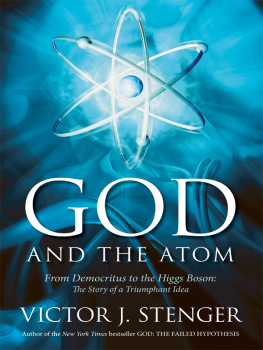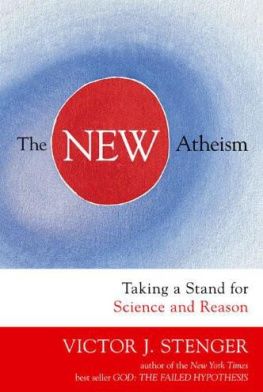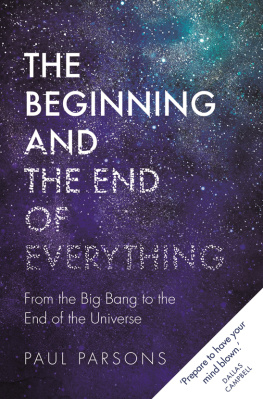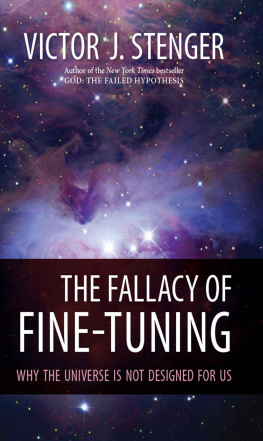The author is indebted to many who have provided feedback on this manuscript. In particular, I must single out Bob Zannelli, Don McGee, and Brent Meeker for their meticulous multiple readings and their many critical corrections and recommended rewordings. They and other members of the Google discussion group atvoid (Atoms and the Void) have been a continual help to me with my previous books and the numerous essays and blogs I generate. This group includes Greg Bart, Lawrence Crowell, Anne OReilly, Kerr Regier, Christopher Savage, Brian Stilson, Pete Stewart, Phil Thrift, Jim Wyman, and Roahn Wynar. I am also grateful for comments from author Kim Clark, physicist Taner Edis, and mathematician James Lindsay.
Thanks also go to several professional astronomers, physicists, and cosmologists who have provided invaluable comments. I am especially grateful to astronomer Jay Pasachoff for his meticulous reading of the manuscript and for providing many corrections. Suggested changes to specific portions of the manuscript where they had deep expertise were also made by Sean Carroll, Alan Guth, Lawrence Krauss, Andrei Linde, Robert Nemiroff, Brent Tully, and Alex Vilenkin.
Finally, I have once again benefitted greatly from the support of my work given by Jonathan Kurtz, Steven L. Mitchell, and their dedicated, talented staff at Prometheus Books.
Abdo, Aous A., et al. Measurement of the Cosmic Ray e+e- Spectrum from 20 GeV to 1 TeV with the Fermi Large Area Telescope. Physical Review Letters 102, no. 18 (2009): 181101.
Ade, P. A. R., et al. Planck 2013 Results. XVI. Cosmological Parameters. arXiv: 1303.5076. 2013. To be published.
Ade, P. A. R., et al. Detection of B-Mode Polarization at Degree Angular Scales by BICEP2, Physical Review Letters 112, no. 24 (2014): 241101.
Adriani, Oscar, et al. An Anomalous Positron Abundance in Cosmic Rays with Energies 1.5100 GeV. Nature 458, no. 7238 (2009): 607609.
Aguilar, M., et al. The Alpha Magnetic Spectrometer (AMS) on the International Space Station: Part IResults from the Test Flight on the Space Shuttle. Physics Reports 366, no. 6 (2002): 331405.
Aguilar, M., et al. First Result from the Alpha Magnetic Spectrometer on the International Space Station: Precision Measurement of the Positron Fraction in Primary Cosmic Rays Of 0.5350 GeV. Physical Review Letters 110, no. 14 (2013): 141102.
Aguirre, Anthony, and Max Tegmark. Born in an Infinite Universe: A Cosmological Interpretation of Quantum Mechanics. Physical Review D 84, no. 10 (2011): 105002.
Aguirre, Anthony, and Steven Gratton. Inflation without a Beginning: A Null Boundary Proposal. Physical Review D67 (2003): 083515.
. Steady-State Eternal Inflation. Physical Review D 65, no. 8 (2002): 083507.
Aharonian, F. A., A. N. Timokhin, and A. V. Plyasheshnikov. On the Origin of Highest Energy Gamma-Rays from Mkn 501. Astronomy and Astrophysics 384, no. 3 (2002): 83447.
Akerib, D. S., et al. First Results from the LUX Dark Matter Experiment at the Stanford Underground Research Facility. Physical Review Letters 112 (2014): 091303.
Alexander, Amir R. Infinitesimal: How a Dangerous Mathematical Theory Shaped the Modern World. New York: Scientific American/Farrar, Strauss and Giroux, 2014.
Al-Khalili, Jim. The House of Wisdom: How Arabic Science Saved Ancient Knowledge and Gave Us the Renaissance. New York: Penguin, 2011.
Albert, David. On the Origin of Everything. New York Times, March 25, 2012.
Albrecht, Andreas and Paul J. Steinhardt. Cosmology for Grand Unified Theories with Radiatively Induced Symmetry Breaking. Physical Review Letters 48, no. 17 (1982): 122023.
Alleyne, Richard. God Is Not the Creator, Claims Academic. Telegraph (U.K.), October 8, 2009.
Alpher, Ralph, and Robert Herman. Genesis of the Big Bang. New York: Oxford University Press, 2001.
. Remarks on the Evolution of the Expanding Universe. Physical Review 75 (1949): 108995.
Alpher, Ralph A., Hans Bethe, and George Gamow. The Origin of the Chemical Elements.

